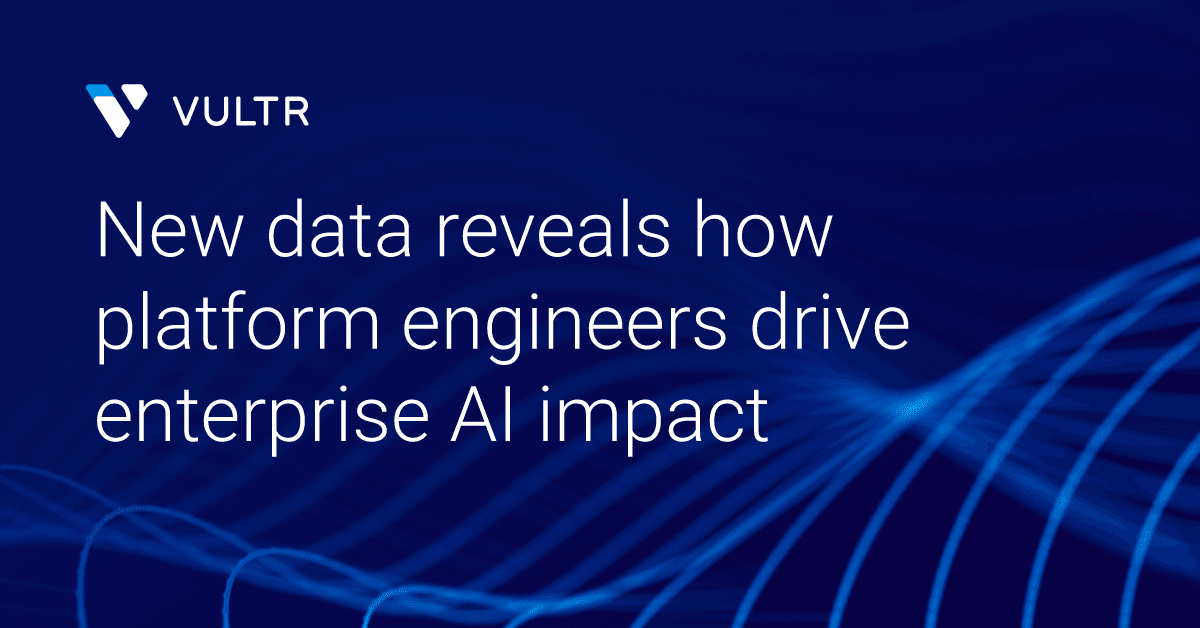AI adoption among platform engineering teams is at a high. According to new research from Platform Engineering and Vultr, nearly nine out of ten platform engineers (89%) use AI daily, and three-quarters (75%) are hosting or planning to host AI workloads. Even more telling: 86% say they see themselves as central to driving business value from AI.
Quick wins vs. enterprise scale
While adoption may be strong, impact is another story.
Most engineers are using AI for fast productivity boosts – things like code generation (75%) and documentation (70%). These are useful, but they only hint at AI’s full potential. In a nutshell, enthusiasm and experimentation are outpacing measurable, strategic results.
Survey respondents called out a few key roadblocks:
- Skill and trust gaps: Over half (57%) lack AI expertise on their teams, and 56% worry about hallucinations eroding trust.
- Unclear AI ownership: Forty percent say platform engineering teams own AI, 25% say ownership is shared, and 13% say no one owns it at all.
- Infrastructure readiness: More than a third don’t orchestrate AI workloads, and 41% haven’t updated CI/CD pipelines to handle AI.
- Collaboration challenges: Nearly a third (31%) report little or no engagement with data science teams.
The new architects of enterprise AI
Despite these challenges, one thing is clear: Platform engineers are the new linchpin of enterprise AI. They’re not only early adopters of AI within their organizations, they’re also tasked with building, standardizing, and operating the infrastructure that makes AI safe and scalable for everyone else.
This is both an opportunity and a risk. Without clear ownership and AI-ready infrastructure, organizations risk getting stuck at the proof-of-concept stage.
As Luca Galante, core contributor to the Platform Engineering community, puts it: “We haven’t seen adoption rates like this for a new technology since the 1990s. But most enterprise AI use today is still more experimental than strategic. Platform engineers are leading the way, but turning momentum into measurable impact will require stronger foundations.”
Moving beyond experimentation
So how do platform teams move beyond the sandbox to deliver enterprise-wide impact? According to Kevin Cochrane, CMO of Vultr, “Momentum alone isn’t enough. Teams need clear golden paths and AI-first infrastructure that make workloads safe, repeatable, and scalable.”
Platform engineers agree: Over half said having a blueprint for AI-ready infrastructure is critical to success.
As Cochrane further explains in a recent Platform Engineering blog, “These templates handle the heavy lifting of provisioning, scheduling, and configuring GPU resources, allowing engineers to focus on model development instead of backend setup. Integrated policy controls ensure security and compliance are enforced by default. These templates are exposed in internal developer portals to provide fast, safe, and repeatable self-service.”
These “golden paths” empower developers to innovate quickly and securely while allowing platform teams to maintain consistency and reliability across all AI workloads.
Laying the groundwork
With the right infrastructure and processes, platform engineers can move AI beyond experimentation and drive impact across the enterprise.
Vultr makes this possible with GPU-ready infrastructure that deploys in minutes, scales globally, and fits seamlessly into existing cloud-native environments. By turning infrastructure into composable building blocks, Vultr gives platform engineers the foundation to build and scale AI workloads without starting from scratch.
As AI adoption grows, prioritizing AI-native foundations will be critical. In the next post, we’ll explore strategies for how platform teams can lay the groundwork for enterprise-wide AI success.

